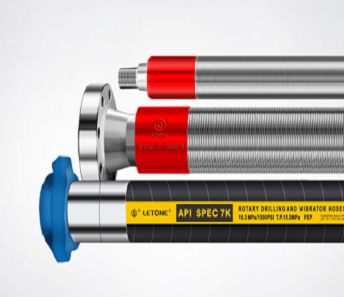Winding vs. Braiding: The Battle for High-Pressure Hose Supremacy
In the world of high-pressure hoses, two reinforcement techniques dominate: winding and braiding. Both methods enhance a hose’s strength and durability, but they differ in design, application, and performance. Let’s dissect the pros and cons of each to help engineers and buyers make informed decisions.
Winding: The Powerhouse for Static Loads
Winding involves spirally wrapping reinforcing materials—typically steel wire—around a hose’s inner tube. This method excels in applications where the hose remains stationary or experiences minimal bending, such as in hydraulic presses or industrial machinery.
Unmatched Strength: Wound hoses can withstand extremely high pressures (up to 100 MPa) without deformation.
Cost-Effective: Winding machines are simpler and cheaper than braiding machines, making wound hoses more affordable for high-volume applications.
Customizable: Manufacturers can adjust the winding angle and pitch to optimize performance for specific fluids or temperatures.
Higher Cost: Braiding machines are complex and expensive, driving up production costs.
Slightly Lower Pressure Rating: While still robust, braided hoses typically handle lower peak pressures than wound hoses.
Choosing the Right Technique: A Case-by-Case Approach
The decision between winding and braiding depends on the application. For example:
Mining: Wound hoses are preferred for stationary hydraulic systems due to their strength and cost-efficiency.
Aerospace: Braided hoses dominate in aircraft fuel lines, where weight savings and flexibility are critical.
Marine: Hybrid hoses—combining winding for pressure resistance and braiding for flexibility—are used in ship steering systems.
The Future: Hybrid Solutions
Manufacturers are increasingly blending winding and braiding to create “best-of-both-worlds” hoses. For instance, a hose might feature a steel wire wound core for strength and a synthetic fiber braided outer layer for flexibility. These hybrids are gaining traction in industries like renewable energy, where hoses must endure harsh conditions while optimizing performance.
Winding and braiding are not rivals but complementary tools in the high-pressure hose toolkit. By understanding their strengths and limitations, engineers can select the ideal reinforcement method for their unique needs—ensuring safety, efficiency, and longevity in even the toughest applications.

 English
English Turkish
Turkish Dutch
Dutch Greek
Greek English
English






